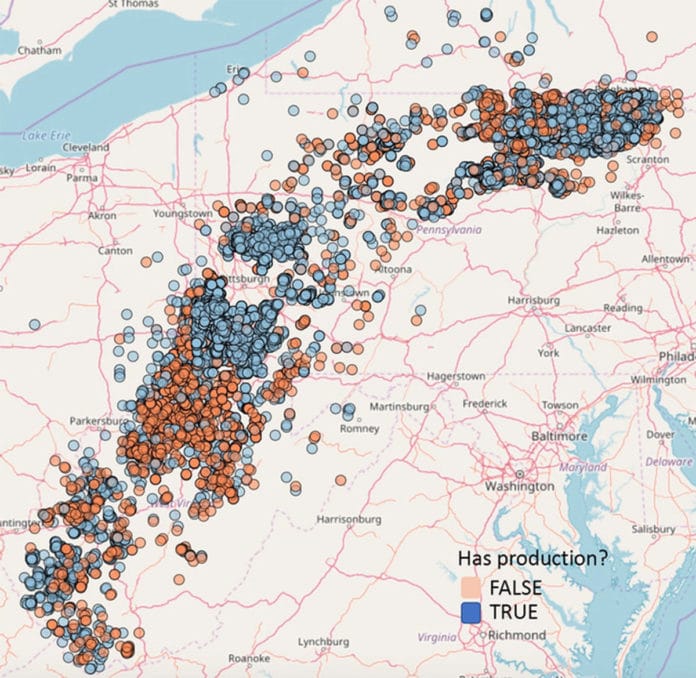To assess the production potential at a new, prospective field site using simulation or material balance, one needs to gather different types of valuable field data and make assumptions about the nature of the formation at that site.
Now, scientists at the Penn State have developed a method to explore natural gas in the Marcellus Shale. The method approximate available gas in untapped areas using well production data taken from more than 5,600 existing wells. Using this method, one can easily find high yield areas at cheap cost.
Analysts utilized just wells with over two years of production logs and allowed a decline curve analysis — the measure of production loss after some time — for each well. They then applied these decrease curves over the entire region of the Marcellus Shale. That enabled analysts to gauge the measure of gas that would be produced after some time if another well were made. Scientists then approved their discoveries utilizing geological maps, which were made from core samples.
Eugene Morgan, Penn State said, “Rather than looking at these geological proxies for production we’re just looking at the production itself. By looking at just production and mapping, we see that it agrees well with these geological variables related to production, which validates our approach. By looking at production alone, you’re directly targeting the information you’re after.”
“The method held strong during validation, showing that it was almost as effective at forecasting natural gas resources as methods that include costly geological data sampling. The errors were within 20 percent when compared to decline curve analysis alone.”
Zhenke Xi, a graduate student in energy and mineral engineering and co-author on the research paper, said, “Since our method mostly takes production data, it’s very economical. Other data, such as porosity and permeability, is expensive to collect. Our method has proven to be very effective using only production data. Getting this data is much easier and more economical than gathering geological data.”
Morgan said, “This method indicates areas that are more favorable for drilling exploratory wells. The drillers can then collect more detailed data and decide if they want to invest more money into completing the well. This is a first-order pass that gives a better indication of where natural gas companies would have greater success.”
Using the data, scientists created a comprehensive heat map of available natural gas within the Marcellus Shale. They also created a website that shows historical production data from all wells in the Marcellus Shale region. The site could demonstrate helpful for industry specialists and property proprietors the same.
This research was funded through the George H. Deike, Jr. Research Grant with data contributions made by DrillingInfo.
The work is published in the SPE Reservoir Evaluation & Engineering journal.
